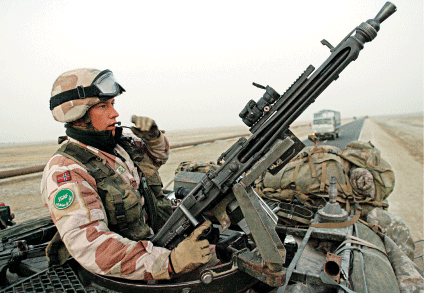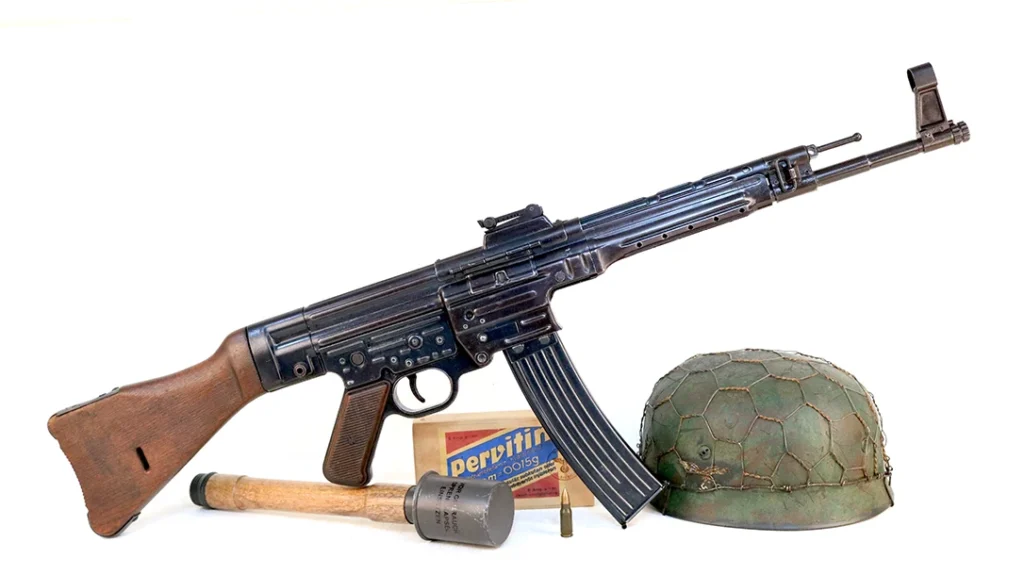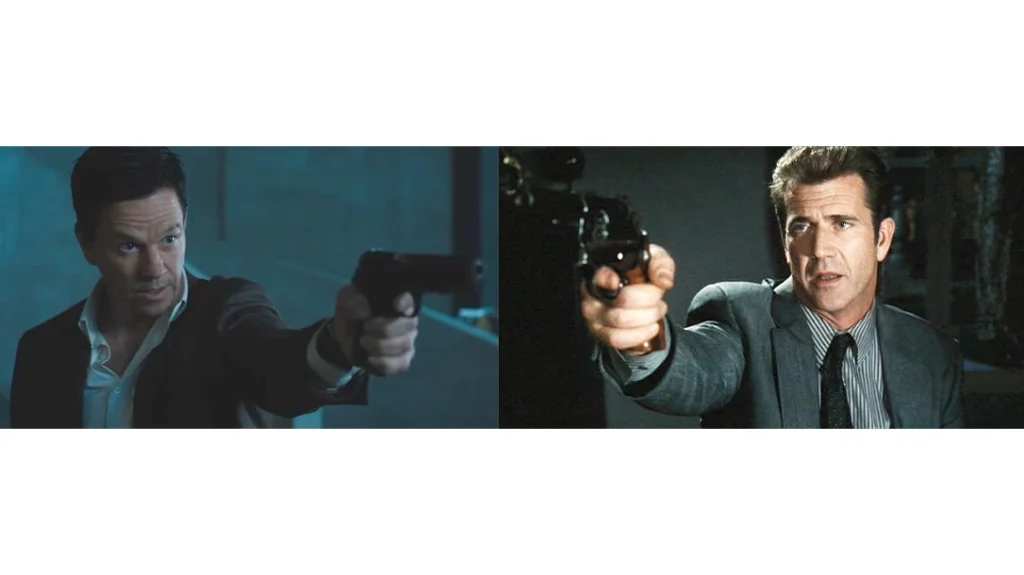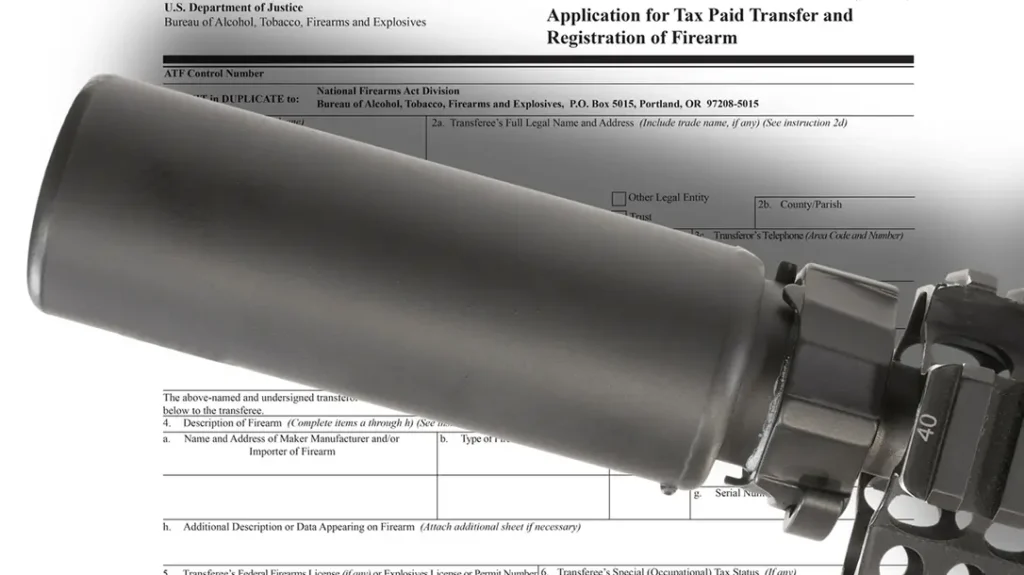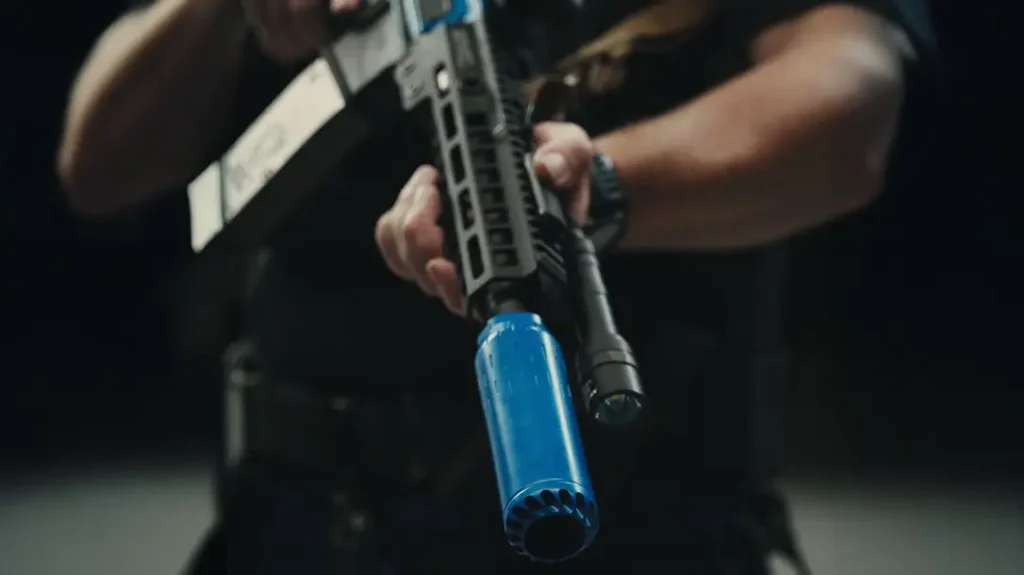During the Second World War, Germany achieved many great technological advances in the field of weaponry. This was especially true in the field of small arms. Most historians would agree that Germany gave birth to the first practical GPMG (general purpose machine guns) during that war. The first of these was the MG34 or Maschinengewehr 34. The MG34 was an excellent weapon and although it remained in production until war’s end it was difficult and expensive to manufacture.
 As early as 1938 German engineers were testing prototypes of a new machine gun, that was less complicated than the MG34 and made extensive use of stampings. The result was the Maschinengeweher 42 or MG42. The MG42 was an air cooled, belt fed, recoil-operated machine gun suitable for short burst or sustained fire. It was chambered to fire the 7.92x57mm cartridge. A quick-change barrel that could be removed and replaced in five seconds by an experienced gunner was one of its many positive attributes. Another attribute, considered a positive by some and a negative by others, was the high cyclic rate of fire which was an astounding 1,200 rounds per minute.
As early as 1938 German engineers were testing prototypes of a new machine gun, that was less complicated than the MG34 and made extensive use of stampings. The result was the Maschinengeweher 42 or MG42. The MG42 was an air cooled, belt fed, recoil-operated machine gun suitable for short burst or sustained fire. It was chambered to fire the 7.92x57mm cartridge. A quick-change barrel that could be removed and replaced in five seconds by an experienced gunner was one of its many positive attributes. Another attribute, considered a positive by some and a negative by others, was the high cyclic rate of fire which was an astounding 1,200 rounds per minute.
German soldiers loved the weapon. It was reliable, relatively lightweight, and accurate. Disciplined gunners could conserve ammunition by using burst fire, but if needed, the devastating high rate of fire was often critical to the success of attacks or in the defense. The unique sound of the MG42 firing became a familiar noise in North Africa, on the Russian Front, and across Europe as the war progressed. As much as it was loved by the Germans, the MG42 was equally hated by Allied soldiers. Because it was such an effective weapon, there were even attempts by the U.S. Army to reverse-engineer the MG42 and adapt it to fire the .30-06 cartridge. This proved unsuccessful due to the difficulty of making adequate design drawings from measurements taken from captured weapons. Eventually the MG42 was, in part, a major influence on the design of the much less successful U.S. M60 machine gun.
Advertisement — Continue Reading Below
By the end of the war, tens of thousands of MG42 machine guns had been produced by different firms in Germany and in plants in occupied nations. Production of the original MG42 ended in 1945. Large stocks were captured by the Allies. Many European nations, including France, utilized the MG42 as their standard GPMG for a number of years after the war. Many MG42 machine guns captured by the Soviet Union would later be supplied to Communist forces around the world and would be used in battle again, including against U.S. forces in Vietnam. As the devastated nations of Europe struggled to rebuild, many put an emphasis on restoring their defense infrastructure to insure that their sovereignty would not be compromised again.
Sound Design, Easy to Adapt
One such nation was Yugoslavia which, although governed by a Communist administration, remained neutral during the Cold War and had good relations with the West and East. MG42 machine guns had been produced in occupied Yugoslavia during the war so it was decided to resume the manufacture of these excellent weapons for the Yugoslavian Army. The MG42 design was refined and designated the Model 1953 or M-53. M-53 machine guns were produced for many years by Zavodi Crvena Zastava, a state-owned company and predecessor of current Serbian arms maker Zastava. When Yugoslavia collapsed decades later, M-53 machine guns were used by the various warring factions. The M-53 was widely exported and can be found around the world today. One export customer was Iraq, which used the M-53 in the Iran-Iraq War and the Kuwait War (Desert Storm). The M-53 has also been used by terrorist forces in Iraq during the current Global War on Terror.
The threat posed by the Soviet Union and its surrogate forces in Communist-occupied Europe following the Second World War led to the formation of the NATO Alliance. The establishment of a free Federal Republic of Germany and Communist controlled German Democratic Republic in 1949 resulted in making divided Germany the European hotspot in the Cold War. A new army was formed to properly defend the recently independent West Germany and a domestic defense industry was re-established. The Army was equipped with an assortment of U.S. and German small arms in a variety of mismatched calibers. An important step in establishing a viable defense force was to standardize weapons in common calibers.
Advertisement — Continue Reading Below
The Germans re-introduced the MG42 into service, but in modified form to fire the new NATO standard 7.62x51mm ammunition. The Rheinmetall industrial concern in Düsseldorf was awarded a contract by the German government in 1956 to remanufacture war time stocks of MG42 machine guns that had been returned to their control. The primary steps would be to replace barrels and modify the receivers to accommodate the 7.62x51mm cartridge. Rheinmetall would also be responsible for setting up a production line in order to construct new MG42 machine guns. The first new MG42 machine guns came off the assembly line in December 1957.
In 1959 Rheinmetall introduced a product-improved MG42 with added enhancements. This weapon was given the model designation MG42/59 by Rheinmetall; and as the MG1 in German Army service, while earlier MG42 guns were re-designated as the MG2. Rheinmetall continued to improve the MG1, which became more accurate and reliable with each modification. Subsequent alterations included the MG1A1 which featured a chromed bore. The MG1A2 allowed the DM1 continuous belt to be used, the standard up until that time, and added the ability to use the U.S. standard M13 disintegrating belt link as well. The MG1A3 through MG1A6 had several minor modifications, most of which were made to further simplify manufacturing and field use.
Easy to Improve
A new model designated the MG3, entered German Army service in 1963. MG3s were produced for Germany and for export customers by Rheinmetall until 1979. Some additional production of the MG3 in Germany was carried out by Heckler & Koch. The MG3 series guns were the last version of the original MG42 design to enter German Army service. MG3 machineguns served Germany well during the Cold War and in the former Yugoslavia.
Advertisement — Continue Reading Below
The MG3 remains in service with the German Army as their standard GPMG and it has been regularly employed in combat during operations in Afghanistan. Since 2006, the 5.56x45mm HK MG4 light machine gun has slowly begun to replace the MG3 in the squad automatic weapon role. An active program to modernize the German Army is under way and this may lead to the MG3 being phased out. However, the MG3 will continue to serve as a medium machine gun and as a secondary weapon on tactical vehicles in the future.
Armies around the world took note of the value of the GPMG and a booming export market developed for weapons like the MG42/59 series and competing designs like the Belgian FN MAG 58, U.S. M60, and comparable Eastern Bloc weapons. Numerous nations showed interest in adopting the MG42/59 and the later MG3. Rheinmetall, in cooperation with the German government, offered the weapons for export. In 1960, NATO nations Denmark and Norway made the MG42/59 their standard GPMG. That same year Indonesia also purchased Rheinmetall produced guns. Italy and Pakistan followed in 1963, Sudan and Iran in 1966, and the United Kingdom, Burma and Chile in 1967.
Still In Widespread Use
Of the dozens of nations making use of the MG42/59 over the years, most of them still do. Three recent users include Latvia, Lithuania and Estonia. Demand was so great that many countries were licensed to manufacture the MG42/59 and MG3. As a result there are several different model designations and slight technical differences among them. In Italy, a consortium of companies lead by Beretta produced the MG42/59 as the Fucile Mitragliatore for a number of years. In Italian service, the weapons are also used on armored vehicles, naval vessels, and helicopters. More recently, the Italian firm SMAL (Stailimento Militare Armi Leggere) has provided conversion kits to the Italian Armed Forces that allows the MG42/59 to fire 5.56x45mm ammunition.
Advertisement — Continue Reading Below
Steyr-Daimler-Puch AG manufactured the design as the MG74 for the Austrians. For a time NATO members Spain and Portugal also produced the MG3 for their forces. Soldiers in some NATO countries often refer to the MG3 as “The Machine” out of respect for its reliability and firepower. Currently at least six nations are known to still manufacture MG3 variants for their militaries and export customers. In Turkey the MG3 is produced by MKEK (Mechanical and Chemical Industry Corporation). Turkish forces have made recent use of the MG3 during combat operations on their border with Iraq. Hellenic Defense Systems S.A. or EAS, makes the MG3 for use by Greece. This company also fabricates a special naval pedestal mount for the MG3 called the B1-H.
Check out our related article about the Steyr MP34: The Top Dog of German WWII Submachine Guns
Pakistan Ordnance Factories is another MG3 maker. Pakistan has used the MG3 during many confrontations with India over the years. The latest use has been during combat operations against terrorists in Pakistan’s semi-autonomous northern tribal region, which borders Afghanistan. The three other nations that fabricate MG3 variants are largely regarded as trouble spots, or even rogue states, by much of the international community. In Myanmar, formerly known as Burma, the MG3 is made at the Ka Pa Sa factories for government forces. Little is known about their use against the dissenting population inside the country due the current regime’s policy of isolation.
Advertisement — Continue Reading Below
Sudan and Iran, which are included on the U.S. State Department’s official list of states that sponsor international terrorism, manufacture MG3 variants. The Sudanese KARAR has been used in many conflicts with nations that border Sudan and in the strife-torn Darfur region. Iran received a license to produce the MG3, known locally as the MGA3, prior to the Islamic Revolution in 1979. The new Islamic Republic of Iran resumed production of the MGA3 for their use and to sell overseas.
A Proven Long Run Continues
It has been 66 years since the MG42 was first used in combat with German forces in the North African campaign. In 2008 the many variants of the MG42 continue to be used in battle. Currently, at least 17 Coalition members use the MG3 or variants in ongoing operations in Afghanistan and/or Iraq. Enemy forces have also made use of the weapons in both nations. This “Firepower Machine” will likely be used by friend and foe alike for many years to come.
